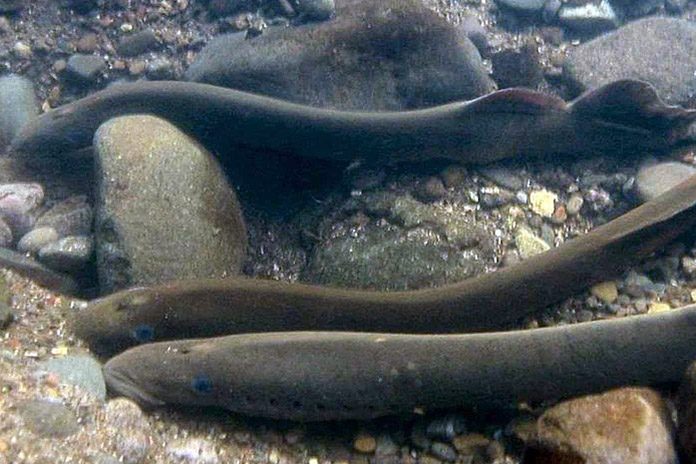
Pacific lamprey, a prehistoric fish native to the Columbia River Basin and treasured by Native American people, are returning to Oregon’s Umatilla River in record numbers.
From the late 1960s through the early 2000s, lamprey were functionally extinct in the Umatilla Basin, and less than five years ago, only a few hundred Pacific lamprey returned to the Umatilla River each year. However, through efforts such as adult translocation, scientists with the Confederated Tribes of the Umatilla Indian Reservation have counted more the 2,600 of the ancient fish migrating up the eastern Oregon river to spawn this spring.
The Confederated Tribes of the Umatilla have worked for nearly 25 years to increase lamprey numbers. The Bonneville Power Administration has funded most of the tribe’s lamprey projects since the early 1990’s, with much of the money going toward lamprey research and improving instream passage. Over the past 10 years, Bonneville Power Administration ratepayers have invested just over $5 million in the Umatilla Basin for lamprey.
Pacific lamprey spend the majority of their lives as tiny larvae living in Northwest streams from three to seven years before migrating out to sea. Adult lamprey have a sucker-like mouth that allows them to be parasitic while in the ocean. They attach to fish and other marine mammals for feeding. Lamprey usually live in the ocean for one to three years before returning to fresh water to spawn. Similar to salmon, lamprey die after spawning and their carcasses provide marine rich nutrients to streams.
“Lamprey are culturally important and a critical First Food for tribes,” said Aaron Jackson, fisheries biologist with the Confederated Tribes of the Umatilla Indian Reservation. “And while they’ve been around for millions of years, until rather recently, managers failed to understand their importance within the food web. Our focus now is to continue lamprey supplementation actions to bolster the overall numbers of lamprey in the Umatilla and other ceded area basins.”
“We understand the cultural significance of Pacific lamprey to the tribes which is one reason we’ve funded lamprey projects in the Umatilla,” says Lorri Bodi, vice president of Environment, Fish and Wildlife with the Bonneville Power Administration. “As a food source for other creatures, lamprey are also very important to a healthy functioning ecosystem such as in the Umatilla River so it’s great to see our efforts paying off.”









